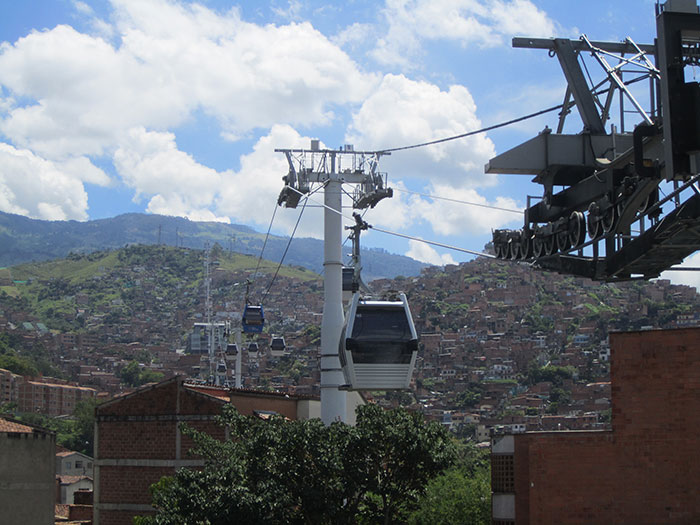Ahead of RIBA’s International Conference on 4 July, a selection of our global roster of speakers set out what they feel are the biggest challenges facing urban environments and what role they think architects play in overcoming these.
While the challenges facing each city can be as distinct and varied as their citizens and culture, one solution to these problems is raised time and time again: the skills of an architect to adapt and collaborate.

Alfredo Brillembourg and Hubert Klumper of Urban-Think Tank want architects, planners and policy-makers to focus their attention on the informal settlements that occupy city fringes world-wide, such as Brazil’s favelas, Venezuela’s barrios and the townships of South Africa.
"Today at least a billion people live in these informal settlements… This is where the greatest urban growth is happening." Said Brillembourg and Klumper "But the issues of inequality, and its impact on urban environments, is even broader. Even in “rich” cities, the crowding together of poor or low-income communities entrenches forms of social exclusion and limits opportunity."
For Brillembourg and Klumper one solution to the entrenched inequality they have consistently lobbied for is "a different kind of architect"; they want architects to be unafraid to take a moral position, and be prepared to venture into the realm of social and political action.
Standing with Urban-Think Tank in calling for an expanded definition for architects is Hannah Corlett of London-based studio ASSEMBLAGE. Corlett wants architects to be involved at the earliest stages of a project, to question and influence urban issues.
"Architects do have an important overview, which, used earlier, collectively and in a more overarching capacity is able to both question and provide solutions to the challenges facing urban environments. Issues such as efficiency, the design and mix of new typologies... and procurement are all areas where architects can influence progressively.", said Corlett.
Saskia Sassen, Robert S. Lynd Professor of Sociology at Columbia University, wants architects to collaborate with a diverse range of professionals to use our city’s surfaces to lessen the environmental impact of our urban spaces.
"If we consider that one aim should be that all surfaces in a city should be working with the biosphere (via bacteria, new types of materials, algae, solar energy, etc) then architects can make a huge difference. But it will entail collaborations with engineers, biologists, materials science experts, social scientists, and legal experts on specific subjects, as a start.’, said Sassen.
In order to innovate, Berlin-based Francis Kéré of Kéré Architecture advocates the importance of innovation through collaboration. Kéré said "We have the ability to understand complex problems and seek solutions in unconventional ways. Opening yourself up to collaboration, especially across different disciplines can really create exciting and innovative results."
The former mayor of Rio de Janeiro, Eduardo Paes, thinks there is a necessity for architects to adapt, not only for the benefit of the built environment, but to avoid becoming obsolete. "Architects should no longer be just the designers of the final forms of buildings or public spaces but also the designers of urban processes", said Paes. To make his point perfectly clear, Paes paraphrases Alejandro Aravena speaking at the 2016 Venice Biennale, "architects risk becoming irrelevant as long as they continue to treat buildings as art."
With the majority of the world’s population now living in urban areas - a proportion which is predicted to grow exponentially in the future - there has never been a more pressing time to consider how the role of the architect can evolve to best serve the evolving urban environment.
Hear from these speakers and many more at the International Conference and find out what architects can do now and prepare to do in the future to help solve the challenges facing the urban environment.









